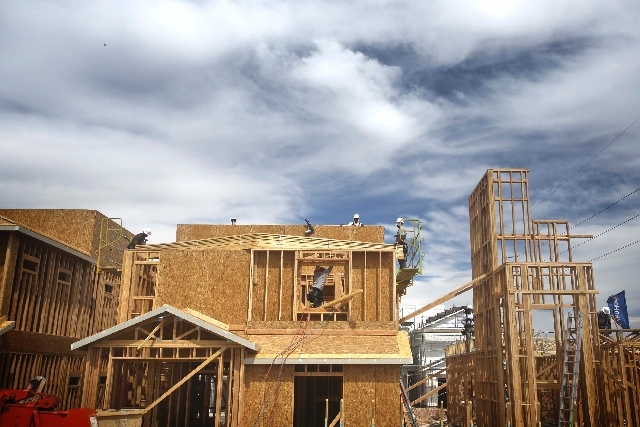Pending sales of U.S. existing homes rise less than forecast

WASHINGTON — Fewer Americans than forecast signed contracts in April to buy previously owned homes, indicating limited inventory is holding back further progress in the housing market.
The index of pending home sales rose 0.3 percent after a 1.5 percent gain in March, figures from the National Association of Realtors showed Thursday in Washington. Growth in the labor market and cheaper borrowing costs have helped sustain housing demand, showing residential real estate will remain a source of strength for the economy. Rising property values may encourage more Americans to put their homes on the market and boost the number of available dwellings.
“We’ve got pent-up demand out there from people who put off purchasing a home, affordability remains very high,” Gus Faucher, a senior economist at PNC Financial Services in Pittsburgh, said before the report. “Housing is, and will be, an important driver of overall economic growth through the rest of 2013 and into 2014.”
Estimates for pending home sales ranged from a decline of 1.1 percent to an increase of 5.5 percent, according to 42 economists surveyed by Bloomberg.
At the same time, mortgage rates that have been fueling home sales are starting to increase and may work to limit further gains in the industry. The average rate for a 30-year fixed mortgage climbed to 3.81 percent in the week ending Thursday from 3.59 percent last week, Freddie Mac figures showed Thursday. In November, the rate reached an all-time low of 3.31 percent.
Economists consider pending home sales a leading indicator because they track contract signings. Existing homes sales are tabulated when a contract closes, usually a month or two later.
Thursday’s Realtors’ report showed pending home sales increased 13.9 percent from April 2012 on an unadjusted basis.
Two of four regions showed an increase in contract signings from a month earlier, reflecting an 11.5 percent gain in the Northeast and a 3.2 percent advance in the Midwest. Pending home sales slumped 7.6 percent in the West and fell 1.1 percent in the South.
The index level for pending home sales was 106 on a seasonally adjusted basis, the highest since April 2010, which was prior to the deadline for a homebuyer tax credit. A reading of 100 coincides with the average level of contract activity in 2001 and “historically healthy” home-buying traffic, according to the NAR.
“The housing market continues to squeak out gains from already very positive conditions,” the group’s chief economist Lawrence Yun said in a statement. “Because of inventory shortages, higher home sales will push up home values to the highest level in five years.”
Purchases of previously owned homes also climbed, to a 4.97 million pace in April, the highest level in more than three years, the Realtors group said this month. The median price rose 11 percent, the fifth consecutive month that property values advanced more than 10 percent year over year.
Lack of inventory has held back sales and encouraged purchases of new homes. Sales of new properties advanced 2.3 percent in April to an annualized pace of 454,000 homes, the second-fastest pace since July 2008, the Commerce Department said last week.
The economy is also creating more jobs. Payrolls expanded by 165,000 workers in April after a revised 138,000 gain in March that was larger than first estimated, Labor Department data showed. The unemployment rate dropped to 7.5 percent, the lowest since 2008.
Mooresville, N.C.-based Lowe’s, the second- largest U.S. home-improvement retailer, is benefiting from housing recovery.
“The housing market continues to show convincing signs of life,” Robert Niblock, chief executive officer at Lowe’s, said on a May 22 earnings call. While growth will be held back by fiscal policy, such as a payroll tax increase that took effect in January, “we do expect that the lagged effect of recent gains in housing will benefit home improvement demand as the year progresses,” he said.